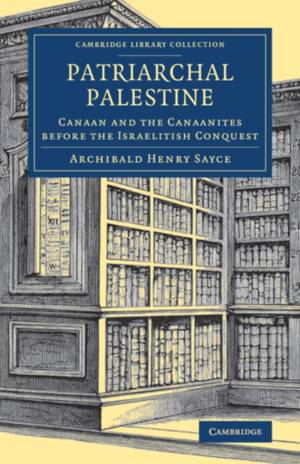
- Afhalen na 1 uur in een winkel met voorraad
- Gratis thuislevering in België vanaf € 30
- Ruim aanbod met 7 miljoen producten
- Afhalen na 1 uur in een winkel met voorraad
- Gratis thuislevering in België vanaf € 30
- Ruim aanbod met 7 miljoen producten
Zoeken
Patriarchal Palestine
Canaan and the Canaanites Before the Israelitish Conquest
Archibald Henry Sayce
€ 64,45
+ 128 punten
Omschrijving
Archibald Henry Sayce (1845-1933) became interested in Middle Eastern languages and scripts while still a teenager. Old Persian and Akkadian cuneiform had recently been deciphered, and popular enthusiasm for these discoveries was running high when Sayce began his academic career at Oxford in 1869. In this 1895 work, he considers the history of the Holy Land in the context of the flood of new documentary and archaeological material which had come to light in the course of the nineteenth century. Sayce's approach opposed the 'higher criticism' which sought to demonstrate that the stories of the Old Testament should not be interpreted literally; in his opinion, 'in the narrative of the Pentateuch we have history and not fiction', and he believed that archaeological discoveries supported his view. Although this approach was already outdated, his reconstruction of the history of the ancient Near East remains of interest to historians of archaeology.
Specificaties
Betrokkenen
- Auteur(s):
- Uitgeverij:
Inhoud
- Aantal bladzijden:
- 286
- Taal:
- Engels
- Reeks:
Eigenschappen
- Productcode (EAN):
- 9781108082303
- Verschijningsdatum:
- 11/07/2019
- Uitvoering:
- Paperback
- Formaat:
- Trade paperback (VS)
- Afmetingen:
- 140 mm x 216 mm
- Gewicht:
- 367 g

Alleen bij Standaard Boekhandel
+ 128 punten op je klantenkaart van Standaard Boekhandel
Beoordelingen
We publiceren alleen reviews die voldoen aan de voorwaarden voor reviews. Bekijk onze voorwaarden voor reviews.








